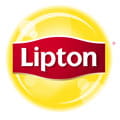Understanding Ingredients on Food Labels

Food labels are an important source of information about calories and the nutritional value of the foods you eat, a crucial tool in building a heart-healthy diet.
The Nutrition Facts information is always displayed in the same orderly fashion. It helps you understand how much of certain nutrients that you need to limit are contained in the product per serving.
The ingredients listed on foods or drinks are not always clear.
What do all those huge words mean? Can you always tell when something has a lot of sugar? How about sodium and trans fats? It may be hard to identify ingredients you want to reduce in your diet to keep it heart-healthy, such as saturated and trans fats, sodium, added sugars and cholesterol.
Some ingredients go by names other than what we expect. But with a little research you can know what you’re eating.
Ingredients are listed in order of quantity, but that doesn’t always tell the whole story. For example, if a jar of salsa lists tomatoes first, you know there are more tomatoes in the product than anything else.
But when it comes to sodium, added sugars and saturated and trans fats – which in excess can damage your heart health and increase your risk of heart disease and stroke – it can be difficult to tell just how much is in there.
These ingredients can go by several names.
There are many terms used for sugar on food labels.
You might see sugar listed as the fourth ingredient in a product and think it’s not so bad. But sugar can also be listed as high-fructose corn syrup or corn syrup, agave nectar, barley malt syrup or dehydrated cane juice, to name just a few. Read more about sugar and sweeteners.
Sodium also has several names.
There’s salt, sodium benzoate, disodium or monosodium glutamate (MSG). Learn more about salt and sodium.
Sodium nitrite is a source of salt in our diets. It’s in hot dogs, lunch meats and other processed meats. It’s used to preserve fish and meats and control bacteria, so it has legitimate uses. But you should be aware that it contributes to your total salt intake. This is important to know because too much sodium can raise blood pressure, increasing the risk for heart disease and stroke. The American Heart Association recommends no more than 2,300 milligrams (mg) of sodium a day and moving toward an ideal limit of no more than 1,500 mg. Still, the average American consumes twice that much.
Perhaps trickiest of all is trans fats.
You won’t find these listed as trans fats at all, but instead ingredients that contain trans fats: mainly partially hydrogenated oil and hydrogenated oil. Trans fats can elevate your risk of developing heart disease and stroke. These fats raise your bad cholesterol (LDL) and decrease your good cholesterol (HDL).








